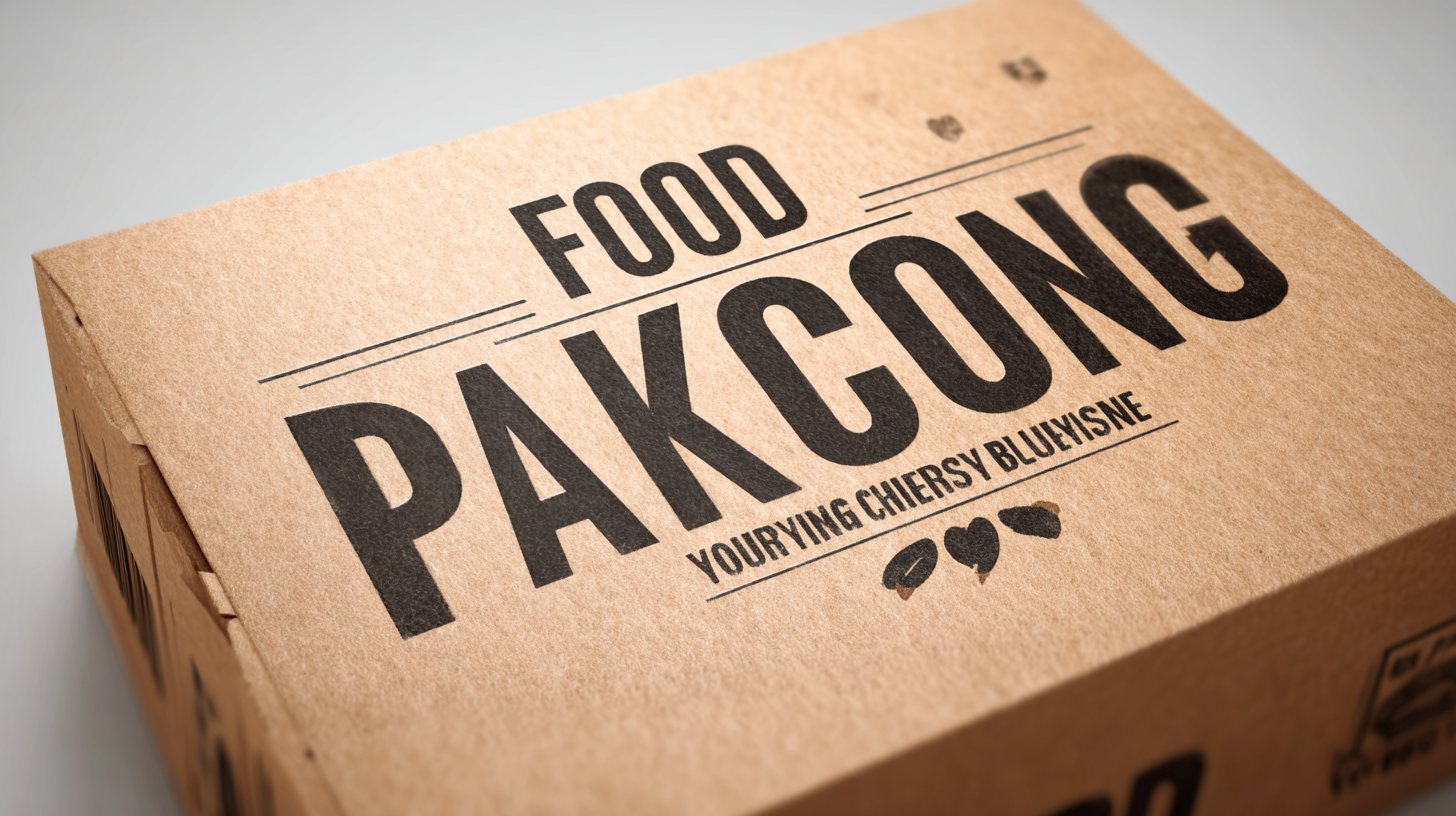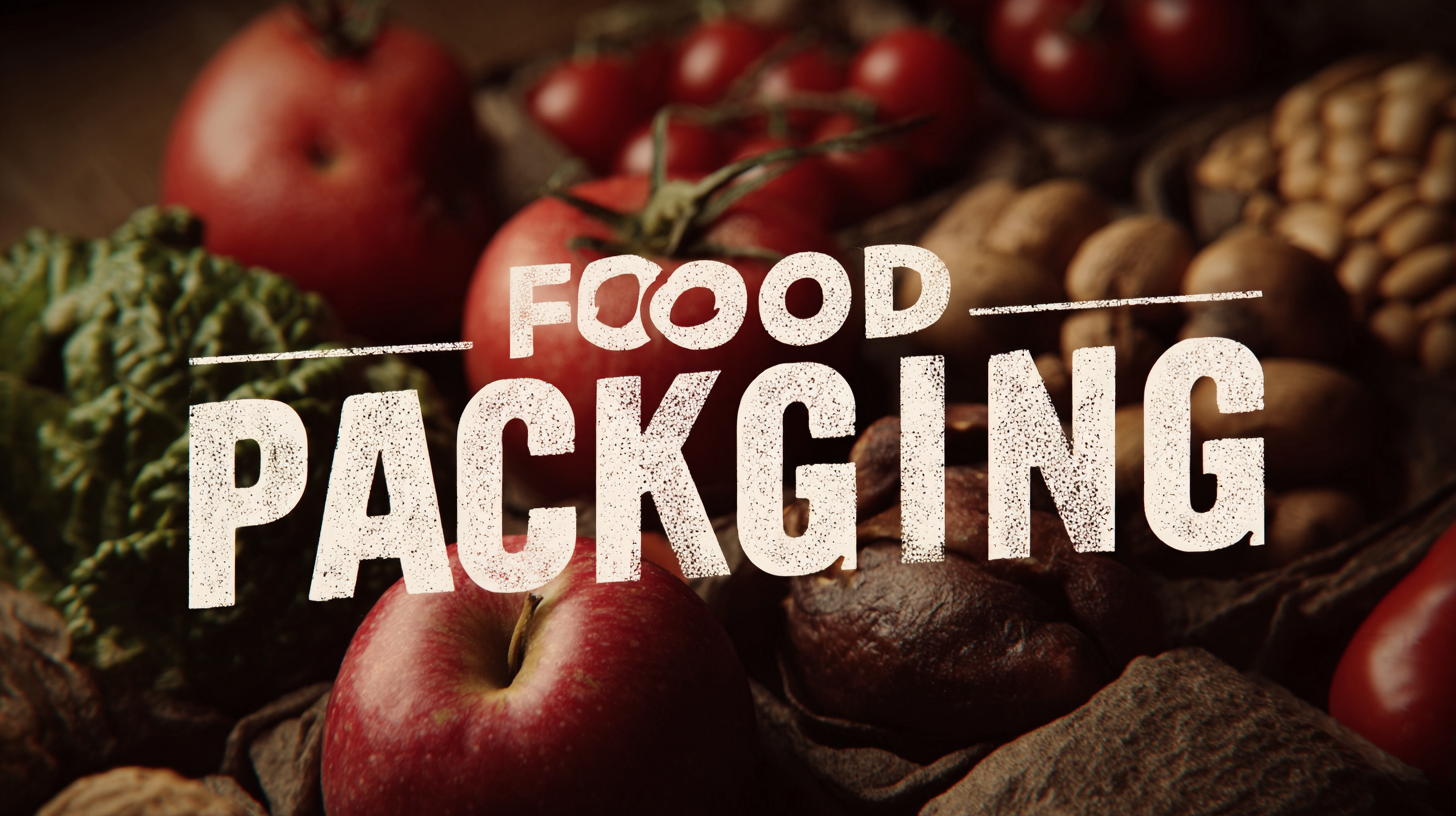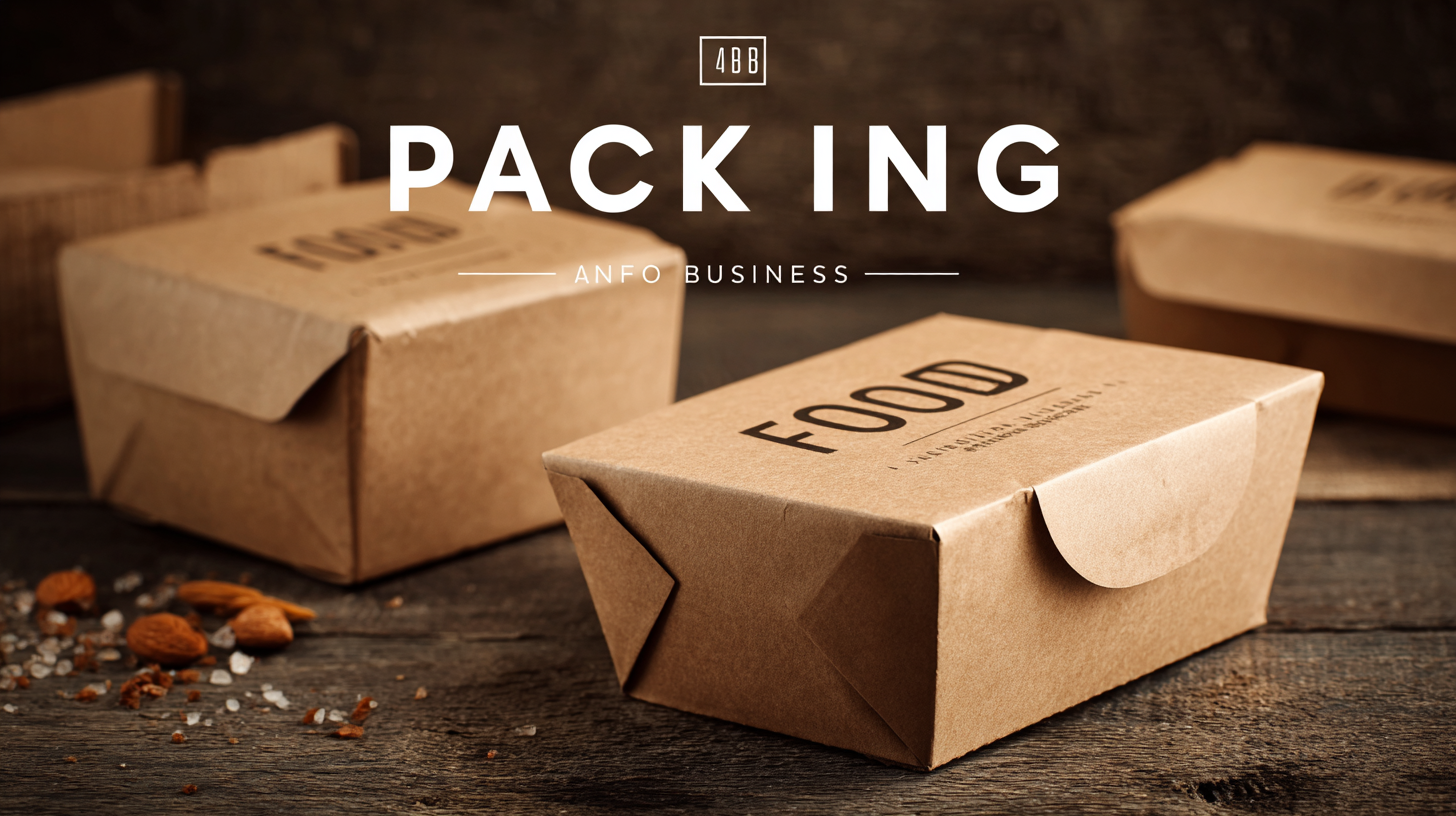7 Key Advantages of Choosing the Best Food Packaging for Your Business
In today's competitive market, selecting the optimal Food Packaging solutions is crucial for businesses aiming to enhance product appeal and ensure safety. A report from the Food and Agriculture Organization (FAO) indicates that effective packaging can reduce food waste by up to 50%, emphasizing its role in sustainability. Furthermore, studies show that 72% of consumers are influenced by packaging design when making purchasing decisions, highlighting the need for businesses to prioritize aesthetics alongside functionality. Moreover, the global food packaging market is projected to reach $600 billion by 2025, growing steadily due to rising demand for convenience and ready-to-eat meals. In this context, understanding the advantages of choosing the best Food Packaging not only influences consumer behavior but also adheres to stringent import and export certifications that govern safety and quality standards worldwide. This blog will explore seven key benefits that effective Food Packaging can bring to your business, ensuring you remain competitive and compliant in the ever-evolving market landscape.

Key Trends in Food Packaging Innovations Impacting Business Growth by 2025
As the food industry continues to evolve, businesses are increasingly recognizing the importance of innovative packaging solutions to enhance brand appeal and ensure safety. By 2025, several key trends are set to reshape food packaging, driving growth and sustainability. One major trend is the rise of eco-friendly materials, which not only reduce environmental impact but also resonate with consumers' growing preference for sustainable products. Brands that adopt biodegradable or recyclable packaging stand to attract environmentally conscious consumers, differentiating themselves in a saturated market.
Another significant trend is the integration of smart packaging technologies. Innovations like QR codes and NFC tags allow businesses to provide consumers with real-time information about product origins, nutritional details, and freshness. This transparency fosters trust and loyalty. Additionally, advances in active packaging—such as oxygen absorbers and moisture control—enhance product longevity and quality, further bolstering a brand’s reputation. By embracing these innovations, food businesses can position themselves more favorably in the competitive marketplace while catering to the needs of modern consumers.
The Role of Sustainable Materials in Enhancing Brand Image and Consumer Trust
 Sustainable materials are rapidly transforming the food packaging landscape, driven by rising consumer awareness and demand for eco-friendly practices. Choosing sustainable packaging not only reflects a company’s commitment to environmental stewardship but also enhances its brand image. When businesses utilize biodegradable, recyclable, or compostable materials, they signal to consumers that they are socially responsible, thereby cultivating a positive perception and differentiating themselves in a crowded marketplace.
Sustainable materials are rapidly transforming the food packaging landscape, driven by rising consumer awareness and demand for eco-friendly practices. Choosing sustainable packaging not only reflects a company’s commitment to environmental stewardship but also enhances its brand image. When businesses utilize biodegradable, recyclable, or compostable materials, they signal to consumers that they are socially responsible, thereby cultivating a positive perception and differentiating themselves in a crowded marketplace.
Moreover, the use of sustainable materials fosters consumer trust. Today’s consumers are more informed than ever and often research brands’ sustainability practices before making purchasing decisions. By openly embracing sustainable packaging, businesses can build authentic connections with their customers, showing that they value both quality food and a healthier planet. This trust can lead to increased brand loyalty, as consumers are more likely to support companies whose values align with their own. Ultimately, incorporating sustainable materials into food packaging is a strategic move that benefits not only the environment but also a company’s relationship with its clientele.
Impact of Food Packaging on Supply Chain Efficiency and Cost Reduction
Food packaging plays a crucial role in enhancing supply chain efficiency and reducing costs in the burgeoning global market, particularly amidst the rising demand for sustainable practices. With the food packaging industry facing significant environmental challenges, such as its dependence on plastics, companies are increasingly adopting innovative technologies. For instance, automation and Artificial Intelligence (AI) are revolutionizing production processes. According to recent studies, AI-driven transformations in food manufacturing can optimize production by minimizing waste and improving overall quality assurance, leading to better resource management and cost savings.
Moreover, the integration of Industry 4.0 technologies, including IoT and blockchain, is paving the way for a decarbonized food supply chain. These advancements not only ensure that companies meet sustainability standards but also enhance transparency and traceability, which are essential for modern consumers. Research indicates that employing reusable transport packaging can further cut costs and reshape global supply chains, aligning with the industry's shift towards more sustainable, circular models. As the food packaging sector continues to evolve, leveraging these technologies will be essential for businesses aiming to thrive while addressing environmental concerns.
7 Key Advantages of Choosing the Best Food Packaging for Your Business - Impact of Food Packaging on Supply Chain Efficiency and Cost Reduction
| Advantage | Description | Impact on Supply Chain | Cost Reduction Potential |
|---|---|---|---|
| Increased Shelf Life | Proper packaging can extend the freshness of food products. | Reduces spoilage during transportation. | Minimizes loss associated with expired products. |
| Brand Protection | Protects food from contamination and damage. | Helps maintain product integrity through the supply chain. | Reduces costs related to returns and recalls. |
| Sustainability | Use of eco-friendly materials attracts environmentally conscious consumers. | Encourages sustainable practices within the supply chain. | Potential savings on waste disposal costs. |
| Cost-Effective Shipping | Lightweight packaging reduces shipping costs. | Improves transportation efficiency. | Direct savings on shipping expenses. |
| Consumer Convenience | Easy to open and resealable packages enhance user experience. | Encourages repeat purchases and customer loyalty. | Potentially lowers marketing costs through increased sales. |
| Compliance with Regulations | Meeting food safety requirements protects the business. | Facilitates smoother inspections and approvals. | Reduces the risk of fines and legal issues. |
| Enhanced Product Display | Aesthetically pleasing packaging attracts consumers. | Improves visibility in stores and online. | Higher sales leading to better revenue generation. |
Consumer Preferences Shaping Food Packaging Designs and Features in 2025
As we move towards 2025, consumer preferences are increasingly shaping the landscape of food packaging designs and features. Today’s consumers are more environmentally conscious than ever, prompting brands to adopt sustainable materials and practices in their packaging choices. Eco-friendly packaging not only resonates with consumers who prioritize sustainability but also helps businesses enhance their brand image. Utilizing biodegradable or recyclable materials can significantly influence a customer’s purchasing decision, making it vital for brands to align their packaging strategies with these evolving preferences.
Moreover, convenience and functionality have emerged as key factors influencing packaging design. Consumers are looking for packaging that is not only visually appealing but also easy to use and store. Features such as resealable bags, single-serving portions, and microwave-safe containers are increasingly in demand, reflecting a shift towards on-the-go lifestyles.
By investing in packaging that caters to these needs, businesses can not only improve customer satisfaction but also drive repeat purchases, establishing a strong foothold in a competitive market. The focus on consumer preferences is clear: businesses must innovate and adapt their packaging solutions to meet the needs of a modern, discerning audience.
Regulatory Changes and Their Influence on Food Packaging Standards and Safety Compliance
 In recent years, regulatory changes have significantly influenced food packaging standards, emphasizing the importance of safety compliance for businesses. According to a report by the Food and Drug Administration (FDA), approximately 10% of foodborne illnesses are attributed to inadequate packaging and labeling practices. This statistic underscores the critical nature of adhering to evolving regulations that seek to ensure consumer safety. Packaging that meets regulatory standards not only protects food products but also enhances brand credibility, thereby attracting more health-conscious consumers.
In recent years, regulatory changes have significantly influenced food packaging standards, emphasizing the importance of safety compliance for businesses. According to a report by the Food and Drug Administration (FDA), approximately 10% of foodborne illnesses are attributed to inadequate packaging and labeling practices. This statistic underscores the critical nature of adhering to evolving regulations that seek to ensure consumer safety. Packaging that meets regulatory standards not only protects food products but also enhances brand credibility, thereby attracting more health-conscious consumers.
Moreover, sustainability mandates have reshaped packaging approaches in the food industry. A survey conducted by the Environmental Protection Agency (EPA) revealed that 73% of consumers are more likely to purchase products that use eco-friendly packaging. This shift is prompting businesses to rethink their packaging materials and processes to comply with new environmental regulations, which often stipulate recyclability and reduced waste. Failure to adapt could result in non-compliance penalties and loss of market share as consumers become more aware of their purchasing impact. Adopting compliant and environmentally friendly packaging not only fulfills regulatory requirements but also positions companies to thrive in a competitive landscape.
